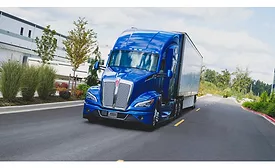Home » Keywords: » driver safety
Items Tagged with 'driver safety'
ARTICLES
‘Put the Phone Away or Pay’ campaign reminds drivers of distracted driving dangers
Read More
Trucking industry eager to attract younger drivers
Driver shortage prompts action from legislators
January 30, 2025
Advance Driver Assistance Systems gradually gaining greater acceptance, adoption
FMCSA releases report on initial on Tech-Celerate Now program
April 2, 2024
Distribution
8 keys to effective driver ergonomics
Physical therapist offers tips on how to improve driver comfort
September 5, 2023
Distribution
Telematics help distribution meet challenges head-on
AI, machine vision help optimize beverage operations
May 22, 2023
Distribution
Vision-based systems evolve, along with driver attitudes toward them
Suppliers release updates to telematics systems for latest vehicles
December 28, 2022
Predictive analytics driving delivery forward
Telematics suppliers highlight cost savings, safety from systems
May 26, 2022
Distribution
Sideload, non-CDL trucks driving a comeback
Current beverage delivery markets highlights benefits of sideloaders
November 2, 2021
Distribution
Enhancements for comfort, ergonomics are driving today’s cab interiors
Equipment enhances operational efficiency while minimizing physical, mental stress
August 3, 2021
Elevate your expertise in the beverage marketplace with unparalleled insights and connections.
Join thousands of beverage professionals today. Shouldn’t you know what they know?
JOIN NOW!Copyright ©2025. All Rights Reserved BNP Media.
Design, CMS, Hosting & Web Development :: ePublishing








